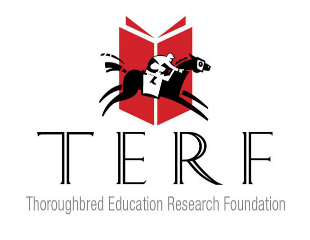2024 Young Investigator Research Grants
Young Investigator Research Grants are awarded to AAEP-member graduate students, residents, or postdoctoral fellows conducting research. (See also Innovation and Discovery Grants.)
Since its inception in 2019, The Foundation’s Young Investigators Research Grant program has awarded $626,045 supporting 33 impactful research projects by up-and-coming investigators. For the fifth consecutive year, the Thoroughbred Education and Research Foundation (TERF) partnered with The Foundation to help make these research projects possible. TERF, whose mission is to make racing safer through research, education, and scholarships, provided funding and collaborative support for two Young Investigator projects.
Following are the 2024 funded projects:
RESEARCH PROJECT: Peripheral Markers of Equine Post-Traumatic Osteoarthritis ![]()
 Osteoarthritis (OA) is responsible for up to 60% of lameness in horses. OA is usually diagnosed after permanent damage has occurred in the joint and there is no current treatment that can reverse this damage. Thus, there is a critical need to find a new method for early diagnosis of OA, so that treatment can be started earlier. This project investigates whether measuring the expression in the blood of genes associated with inflammation can diagnose OA in its earliest stages. We expect that a combination of several genes will be more accurate than any single gene alone. In the future, a diagnostic panel could be developed based on these genes and then validated in a larger population of horses.
Osteoarthritis (OA) is responsible for up to 60% of lameness in horses. OA is usually diagnosed after permanent damage has occurred in the joint and there is no current treatment that can reverse this damage. Thus, there is a critical need to find a new method for early diagnosis of OA, so that treatment can be started earlier. This project investigates whether measuring the expression in the blood of genes associated with inflammation can diagnose OA in its earliest stages. We expect that a combination of several genes will be more accurate than any single gene alone. In the future, a diagnostic panel could be developed based on these genes and then validated in a larger population of horses.
RESEARCHER: Ms. Samantha Hammack, University of Illinois Champaign-Urbana
RESEARCH PROJECT: A novel method to measure gastric pH wirelessly in foals
 Gastric ulceration is a common and important condition in foals. It is associated with exposure to acidic gastric fluid but the underlying causes are less well understood than in adult horses, and the relationship between gastric acidity and gastric ulceration requires further investigation. Treatment centers around reducing gastric acidity so measurement of intragastric pH is important, but current methods have limitations. A wireless capsule has been designed for continuous pH monitoring in humans with gastroesophageal reflux disease, and a novel method has been recently developed to obtain continuous wireless pH measurements in adult horses using this capsule. This proposed study will investigate the feasibility of this capsule to measure intragastric pH in foals and describe the methodology used to do so. This novel technique would enable reliable and minimally invasive measurement of intragastric pH in foals, providing a viable alternative to current methods in both research and clinical scenarios.
Gastric ulceration is a common and important condition in foals. It is associated with exposure to acidic gastric fluid but the underlying causes are less well understood than in adult horses, and the relationship between gastric acidity and gastric ulceration requires further investigation. Treatment centers around reducing gastric acidity so measurement of intragastric pH is important, but current methods have limitations. A wireless capsule has been designed for continuous pH monitoring in humans with gastroesophageal reflux disease, and a novel method has been recently developed to obtain continuous wireless pH measurements in adult horses using this capsule. This proposed study will investigate the feasibility of this capsule to measure intragastric pH in foals and describe the methodology used to do so. This novel technique would enable reliable and minimally invasive measurement of intragastric pH in foals, providing a viable alternative to current methods in both research and clinical scenarios.
RESEARCHER: Dr. Evelyn Hodgson, University of Queensland
RESEARCH PROJECT: Impact of abnormal cleavage on equine embryonic chromosomal stability and pregnancy loss
 Early embryonic loss (EEL) in horses remains a major concern in the equine industry, posing significant economic and emotional challenges, with most cases (>80%) having an undetermined cause. The relationship established between abnormal chromosomal numbers or aneuploidy and embryonic loss in the horse merits a deeper investigation of the mechanism of chromosomal segregation. The first mitotic division after zygote formation involves a delicate series of events such as pronucleus formation and migration to a central position, maternal and paternal pronucleus approximation for parental genome unification, chromosomal alignment in metaphase plate and chromosomal segregation, and finally symmetric cytokinesis. All these meticulously orchestrated events must occur without error, for daughter cells to be composed of equal chromosomal numbers. Errors during any of these stages give rise to clone lineages with aneuploidies, which could be lethal for embryo development. We discovered an association between abnormal cleavage patterns of this first mitotic division and a higher incidence of EEl. Hence, understanding if abnormal cleavage and aneuploidy, two components of pregnancy loss, are associated, is paramount in understanding the etiology of EEL of embryonic origin. In addition, the cytoplasmic and organelle reorganization leading to adequate pronuclei formation and migration is an important component of the success of mitosis, so understanding the mechanism in the horse is essential to elucidate and mitigate EEL. Overall, we aim to study the basis of EEL with the ultimate goal of mitigating the burden of pregnancy loss in the horse.
Early embryonic loss (EEL) in horses remains a major concern in the equine industry, posing significant economic and emotional challenges, with most cases (>80%) having an undetermined cause. The relationship established between abnormal chromosomal numbers or aneuploidy and embryonic loss in the horse merits a deeper investigation of the mechanism of chromosomal segregation. The first mitotic division after zygote formation involves a delicate series of events such as pronucleus formation and migration to a central position, maternal and paternal pronucleus approximation for parental genome unification, chromosomal alignment in metaphase plate and chromosomal segregation, and finally symmetric cytokinesis. All these meticulously orchestrated events must occur without error, for daughter cells to be composed of equal chromosomal numbers. Errors during any of these stages give rise to clone lineages with aneuploidies, which could be lethal for embryo development. We discovered an association between abnormal cleavage patterns of this first mitotic division and a higher incidence of EEl. Hence, understanding if abnormal cleavage and aneuploidy, two components of pregnancy loss, are associated, is paramount in understanding the etiology of EEL of embryonic origin. In addition, the cytoplasmic and organelle reorganization leading to adequate pronuclei formation and migration is an important component of the success of mitosis, so understanding the mechanism in the horse is essential to elucidate and mitigate EEL. Overall, we aim to study the basis of EEL with the ultimate goal of mitigating the burden of pregnancy loss in the horse.
RESEARCHER: Dr. Soledad Martin-Pelaez, University of California, Davis
RESEARCH PROJECT: The use of next generation amplicon sequencing to identify etiological agents in equine synovial sepsis ![]()
 Synovial sepsis is frequently encountered in equine medicine and is associated with high morbidity and mortality. The current gold standard to achieve a diagnosis, define the etiological agent/s and formulate a treatment plan is bacterial culture and susceptibility testing. Unfortunately, this common microbiological test comes with significant shortcomings, most notably a delay in reporting and lack of sensitivity which negatively impacts clinical decision making and treatment. A relatively new set of genetic tools called next generation sequencing (NGS) have the potential to significantly improve the detection of infectious organisms in synovial sepsis.
Synovial sepsis is frequently encountered in equine medicine and is associated with high morbidity and mortality. The current gold standard to achieve a diagnosis, define the etiological agent/s and formulate a treatment plan is bacterial culture and susceptibility testing. Unfortunately, this common microbiological test comes with significant shortcomings, most notably a delay in reporting and lack of sensitivity which negatively impacts clinical decision making and treatment. A relatively new set of genetic tools called next generation sequencing (NGS) have the potential to significantly improve the detection of infectious organisms in synovial sepsis.
RESEARCHER: Dr. David Cox, University of Georgia
RESEARCH PROJECT: Breaking Barriers: The Impact of Endurance Exercise on the Equine Intestine
 Gastrointestinal (GI) disease, particularly colic, accounts for over 20% of equine deaths, making it a significant welfare and economic issue for horse owners. Despite advances in diagnostic methods, these typically detect issues only when symptoms are severe. Often, these symptoms are due to toxins entering the bloodstream from the intestines. This usually happens when blood flow to the intestines is inadequate. While mechanical issues such as strangulated or ‘twisted’ intestines are known to cause colic through reduced blood flow, other factors such as extreme exercise may also impact intestinal blood flow and can lead to GI injury and subsequent complications that, to date, have not been evaluated in the horse. Our lab focuses on finding non-invasive markers of GI injury in horses. In this study, we will use these markers to monitor GI health in endurance horses by measuring them before, during, and after endurance rides. Our goal is to understand how exercise and other conditions cause GI injury. With this information, we strive to identify new ways of preventing colic in horses.
Gastrointestinal (GI) disease, particularly colic, accounts for over 20% of equine deaths, making it a significant welfare and economic issue for horse owners. Despite advances in diagnostic methods, these typically detect issues only when symptoms are severe. Often, these symptoms are due to toxins entering the bloodstream from the intestines. This usually happens when blood flow to the intestines is inadequate. While mechanical issues such as strangulated or ‘twisted’ intestines are known to cause colic through reduced blood flow, other factors such as extreme exercise may also impact intestinal blood flow and can lead to GI injury and subsequent complications that, to date, have not been evaluated in the horse. Our lab focuses on finding non-invasive markers of GI injury in horses. In this study, we will use these markers to monitor GI health in endurance horses by measuring them before, during, and after endurance rides. Our goal is to understand how exercise and other conditions cause GI injury. With this information, we strive to identify new ways of preventing colic in horses.
RESEARCHER: Dr. Natalia Rodriguez, University of Georgia
RESEARCH PROJECT: Data Science for the Assessment and Characterization of Equine Metabolic Syndrome
 This research study aims to assess the prevalence of Equine Metabolic Syndrome (EMS) among horses treated at the Colorado State University Veterinary Teaching Hospital (CSU VTH) using a validated rules-based system to analyze electronic medical records. We will develop and validate an automated method to identify EMS cases, determine its prevalence, and characterize the clinical manifestations and demographic profiles of affected horses. Using data mining, the research will streamline the retrospective identification of EMS, enabling large-scale analysis and pattern recognition that manual methods cannot efficiently achieve. This approach will provide valuable insights into equine medical conditions, demonstrating the potential of data-driven methodologies to inform veterinary diagnostics and treatment strategies.
This research study aims to assess the prevalence of Equine Metabolic Syndrome (EMS) among horses treated at the Colorado State University Veterinary Teaching Hospital (CSU VTH) using a validated rules-based system to analyze electronic medical records. We will develop and validate an automated method to identify EMS cases, determine its prevalence, and characterize the clinical manifestations and demographic profiles of affected horses. Using data mining, the research will streamline the retrospective identification of EMS, enabling large-scale analysis and pattern recognition that manual methods cannot efficiently achieve. This approach will provide valuable insights into equine medical conditions, demonstrating the potential of data-driven methodologies to inform veterinary diagnostics and treatment strategies.
RESEARCHER: Dr. Nadia Saklou, Colorado State University
RESEARCH PROJECT: The use of cell culture to investigate mechanisms of valvular regurgitation in horses
 Heart valve regurgitation is a common problem affecting horses. The valves between the chambers of the heart do not form a tight seal and some blood moves backward rather than forward which over time can worsen and have important consequences for both horse and rider. Mechanisms of why this occurs and how quickly it progresses in horses are largely unknown and require further investigation. This study proposes looking at the differences in normal and regurgitant valves with cell culture. Cell culture involves removal of the valves from a donor deceased horse and growing the different cell populations in a lab setting. Here we propose that serotonin, a molecule that can be found in the blood, may affect the valve cells and contribute to the formation of thickening/irregular valves, similar to what is seen in humans and dogs. By investigating this in a laboratory setting, we can closely monitor the change in cells, receptors within cells and overall growth in a controlled environment and at a significantly cheaper cost than if using live horses. This approach will improve our understanding of equine valvular heart disease and provide a new technique to be used to study valve disease and investigate potential treatment options.
Heart valve regurgitation is a common problem affecting horses. The valves between the chambers of the heart do not form a tight seal and some blood moves backward rather than forward which over time can worsen and have important consequences for both horse and rider. Mechanisms of why this occurs and how quickly it progresses in horses are largely unknown and require further investigation. This study proposes looking at the differences in normal and regurgitant valves with cell culture. Cell culture involves removal of the valves from a donor deceased horse and growing the different cell populations in a lab setting. Here we propose that serotonin, a molecule that can be found in the blood, may affect the valve cells and contribute to the formation of thickening/irregular valves, similar to what is seen in humans and dogs. By investigating this in a laboratory setting, we can closely monitor the change in cells, receptors within cells and overall growth in a controlled environment and at a significantly cheaper cost than if using live horses. This approach will improve our understanding of equine valvular heart disease and provide a new technique to be used to study valve disease and investigate potential treatment options.
RESEARCHER: Dr. Elizabeth Williams Louie, Cornell University

